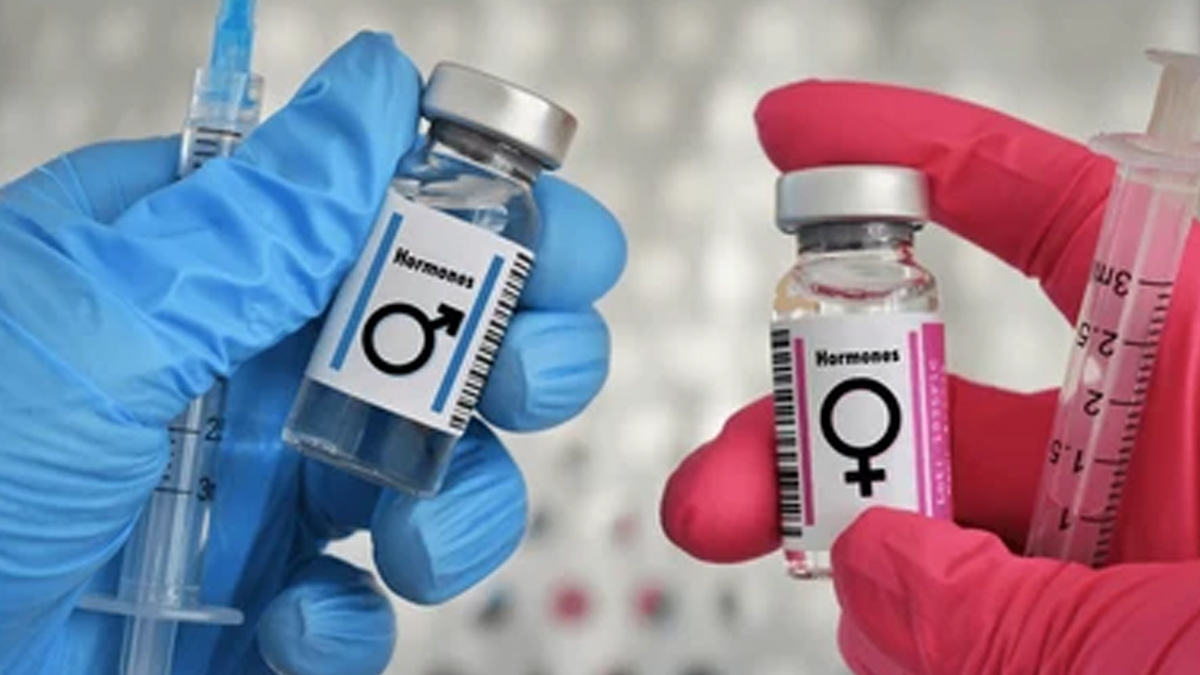
Former Indian cricketer Sanjay Bangar’s child, Aryan, who is now known as Anaya Bangar, has taken the internet by storm with her recent revelation about her gender-affirming transition. In an Instagram post, Anaya, now living as a transgender woman, shared her journey of self-discovery and transformation, highlighting the changes she has been experiencing over the course of 11 months since she started Hormone Replacement Therapy (HRT).
Table of Content:-
What Is Hormone Replacement Therapy And Its Different Types?
Understanding The Difference Between HRT For Menopause And HRT For Gender-Affirming Transformation
Gender-Affirming Hormone Replacement Therapy Benefits, Risks, Side Effects, And What To Expect
How Soon Can You Expect Effects Of Hormone Replacement Therapy?
Many of us who have heard of HRT associate it with treatment for menopause symptoms or other medical conditions. HRT usually involves supplementing or replacing hormones that the body no longer produces in sufficient quantities, such as oestrogen or testosterone. Additionally, for gender-affirming transformation, HRT helps align an individual's physical characteristics with their gender identity, supporting the transition process for transgender individuals by promoting desired traits like breast development or facial hair growth.
In light of Anaya Bangar’s inspiring transformation, we explore how Hormone Replacement Therapy (HRT) supports individuals undergoing similar gender-affirming transitions while also highlighting the potential risks to consider along the way.
View this post on Instagram
What Is Hormone Replacement Therapy And Its Different Types?

In an interaction with the OnlyMyHealth team, Dr Satyam Chakraborty, Endocrinologist, Fortis Hospital, Anandapur, said, "HRT helps replenish declining hormone levels, primarily oestrogen and progesterone, commonly during menopause. It is prescribed to alleviate symptoms such as hot flashes, mood swings, and bone loss."
"The types of HRT include Oestrogen-Only Therapy (for those who have had a hysterectomy), Combined HRT (for women with an intact uterus), and Bioidentical HRT (which uses plant-based hormones resembling human hormones). The choice of therapy depends on individual medical history and specific symptoms," he added.
Understanding The Difference Between HRT For Menopause And HRT For Gender-Affirming Transformation
-1731406132361.jpg)
According to Dr Chakraborty, HRT for menopause and HRT for gender transition are different.
“Menopause HRT aims to replace declining hormones like oestrogen and progesterone to relieve symptoms in cisgender women (a person who was assigned female at birth (AFAB) and identifies as a woman or girl). In contrast, gender-affirming HRT is used to induce physical changes that align with a person’s gender identity: transgender women receive oestrogen and anti-androgens, while transgender men receive testosterone,” he explained.
Both therapies require individualised plans and ongoing medical supervision for safety and effectiveness.
Gender-Affirming Hormone Replacement Therapy Benefits, Risks, Side Effects, And What To Expect
Also known as Gender-Affirming Hormone Therapy (GAHT), this type of HRT offers several benefits for individuals undergoing gender transition, aligning physical characteristics with gender identity and often improving mental well-being. shared Dr Chakraborty, adding that for transgender women, oestrogen and anti-androgens help develop breast tissue, soften skin, and reduce body hair, whereas for transgender men, testosterone promotes muscle growth, deepens the voice, and induces facial and body hair.
According to the doctor, HRT can enhance self-esteem, reduce gender dysphoria, and improve quality of life.
However, it requires medical supervision. This is because long-term use of HRT can have specific side effects and health risks. In transgender women, oestrogen therapy may increase the risk of blood clots, high blood pressure, and, rarely, breast cancer. Transgender men using testosterone may experience elevated cholesterol levels, increased red blood cell count, and potential liver strain.
A study published in the journal Metabolism Open found that transgender women on gender-affirming hormone therapy (GAHT) face a higher risk of Ischaemic Heart Disease (IHD), including myocardial infarction, compared to cisgender women. However, their risk is similar to that of cisgender men. Studies have shown a higher prevalence of myocardial infarction in transgender women on GAHT, with some studies reporting a 3-fold increased risk of cardiovascular mortality in those treated with ethinyl oestradiol.
Additionally, both groups may face fertility changes. Dr Chakraborty said, “In transgender women (taking oestrogen and anti-androgens), sperm production often decreases significantly and may become irreversible with prolonged use. For transgender men on testosterone, ovulation typically stops, reducing the likelihood of pregnancy, though it's not a guaranteed form of contraception. Individuals considering HRT and wanting to preserve fertility should discuss options like sperm or egg banking with their healthcare provider before starting therapy.”
Research has also indicated that people who started GAHT produced less sperm. In fact, one study published in Cell Reports Medicine found that transgender women who stop taking GAHT to have children may be able to produce sperm again, challenging the common belief that GAHT causes permanent infertility in transgender women. However, it's important to note that this study is small and more research is needed to confirm these findings.
Therefore, regular monitoring by a healthcare provider is essential to detect and manage these risks effectively, ensuring safe long-term use.
Also Read: A Gynaecologist Answers The Most Common Questions Asked About Menopause
How Soon Can You Expect Effects Of Hormone Replacement Therapy?
-1731406145768.jpg)
“The effects of HRT typically begin within a few weeks but can take several months to fully develop,” said Dr Chakraborty.
For transgender women, initial changes like softer skin and reduced muscle mass usually appear within 1–3 months, while breast development may take 3–6 months. For transgender men, voice deepening and increased body hair often start within 1–2 months.
Doctors monitor results through regular physical exams, blood tests to check hormone levels, and assessments of mental well-being, Dr Chakraborty added, concluding that adjustments to dosage may be made based on response and any side effects, ensuring safe and effective progress toward desired outcomes.
Also watch this video
How we keep this article up to date:
We work with experts and keep a close eye on the latest in health and wellness. Whenever there is a new research or helpful information, we update our articles with accurate and useful advice.
Current Version